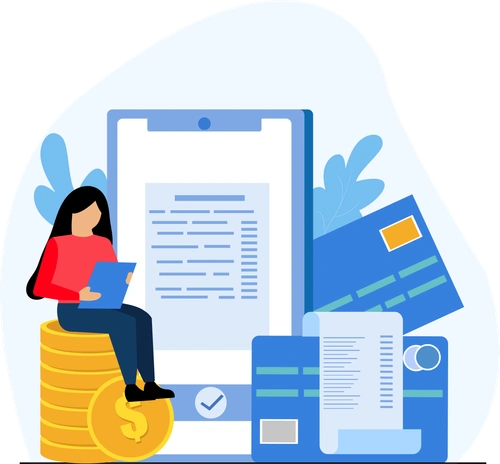
How to Pay Medicare Premiums Online
Many beneficiaries entering the world of Medicare for the first time are often taken aback when they discover that Medicare isn't free. While most beneficiaries are exempted from a monthly premium for Medicare Part A due to it being covered by Medicare payroll taxes, the scenario changes when it comes to Medicare Part B. A monthly premium for Part B is a standard.
Anyone who is already taking Social Security benefits will get the convenience of having the Part B premium directly deducted from their monthly Social Security payments. However, if you're not on Social Security during your Medicare enrollment, expect to be billed on a quarterly basis for your Part B premiums.
If you have the means to pay your quarterly Part B premium in a lump sum, which might hover adjust under $500 in 2023, then sending a check through snail mail could be a good choice. However, for those who prioritize security and efficiency, online payments or electronic funds transfers offer a more streamlined approach.
There are lots of ways to pay your Medicare premiums, so let’s talk about a few of those options.
Medicare Easy Pay
For Medicare beneficiaries who prioritize convenience and consistency, Medicare Easy Pay is an optimal choice for paying your Medicare Part B premiums. By using this method, you give permission for your Part B premium to be automatically withdrawn from your bank account each month.
Opting for this approach removes the stress of missing a payment. It ensures that you remain in good standing, safeguarding against the potential of your coverage being accidentally interrupted. If you're already receiving monthly or quarterly invoices for your Part B premium, you're in a position to enroll in Medicare Easy Pay.
Enrolling in Medicare Easy Pay
Enrolling in Medicare Easy Pay is straightforward. Start by filling out the CMS Authorization Agreement for Preauthorized Payments form available online. Once done, print and forward the form to the designated address.
After sending your form, a waiting period of six to eight weeks is standard for starting your Medicare Easy Pay auto-draft. Write down the date when you mailed the form and mark your calendar eight weeks out. If you find that your Medicare Easy Pay hasn't been activated by this date, reach out to Medicare for a status update.
During this interim period, keep making your regular payments for your Medicare Part B premiums. The initial payment processed through Medicare Easy Pay will be adjusted against your subsequent monthly premium. Should there be any impediments in form processing, expect to receive the form back with a letter detailing the reason.
Upon successful processing, brace yourself for a monthly Medicare Premium Bill. However, do not misconstrue it as a traditional bill. A prominent note, "This is not a bill," will feature at the top right of this document. Its primary purpose is to let you know of the impending deduction amount. Usually, the 20th of every month is when they execute the auto-payment. On your bank statement, these auto debits will be denoted as "Automated Clearing House."
Other Ways to Pay Medicare Premiums Online
While Medicare Easy Pay stands out as a favored choice for many when it comes to paying Medicare premiums, the digital world offers several other online alternatives. It's important to note that these methods might necessitate monthly manual processing instead of an auto-deduction mechanism.
Medicare.gov
We always encourage our clientele to create a Mymedicare.gov account. This portal not only provides a platform to monitor your Medicare claims and inspect your Part B deductible balance, but it also facilitates the payment of Medicare premiums via credit or debit cards. Enrolling is a breeze; all you need is your unique Medicare ID number.
Your Bank's Online Payment System
Today’s modern banking platforms incorporate an online bill payment feature for their customers. Certain banks might even extend the courtesy of establishing automated bill payments. For instance, institutions like Chase present their users with the facility to settle bills directly through their digital platforms. To harness this feature, sharing specific details with your bank becomes imperative, such as:
-
Medicare ID number
-
Payment amount
-
Payee details
Despite its apparent convenience, this method does pose potential setbacks. An annual increase in Medicare Part B premiums is commonplace. Thus, the onus of updating your bank about these revised amounts rests upon you. Additionally, it's wise to be privy to your bank's charges for this service to sidestep any unforeseen costs.
A pivotal consideration to bear in mind pertains to the mode of payment chosen by your bank. While electronic transfers are nomal for most, a select few might opt for check payments. If your bank treads the latter path, proactive payment initiation, ideally a couple of weeks before the deadline, ensures timely receipt by Medicare.
Paying Your Medicare Part D, Medicare Advantage, and Medigap Premiums
The options available for premium payment hinge largely on your chosen insurance provider. Regardless, a majority of private insurers extend these common methods:
-
Telephone transactions
-
Snail mail
-
Electronic Funds Transfer (EFT)
-
Online portals
For an in-depth understanding of the payment methods at your disposal, it's advisable to speak directly with your insurance company. At Local Medicare Specialists, we almost always advocate for the EFT method when paying premiums. Its unparalleled security, combined with the minimal hassle involved, makes it a preferred choice for many.
Paying Medicare Premiums with an HSA
An HSA, or Health Savings Account, serves as a dedicated reserve for approved medical expenditures. This account allows you to allocate pretax funds for various health-related costs, including physician consultations, surgical charges, medical devices, and prescription medications.
While a direct payment of Medicare premiums using your HSA isn't possible, there's a workaround. You can pull funds from the HSA as a reimbursement for these premiums. Notably, Medicare premiums for Parts A, B, C, and D fall under the category of permissible expenses and, as such, are tax-deductible.
For those who receive their Part B premium invoices from the Railroad Retirement Board, the payment options previously mentioned won't be applicable.
Medicare Easy Pay, with its "set it and forget it" convenience, remains a top choice among our clients yet to benefit from Social Security. Keep in mind once you start your Social Security benefits, the Part B premium will be seamlessly extracted from it. Until that time, the highlighted payment methods should serve you well.
Still Have Medicare Questions?
Schedule a FREE Medicare plan consultation with an agent in your neighborhood.
Privacy and Security: Your privacy and security are extremely important to us. Your personal information is protected by our Privacy Policy
LocalMedicareSpecialists.com is privately owned and operated by LMS Insurance LLC. LocalMedicareSpecialists.com is a non-government resource for those who depend on Medicare, providing Medicare information in a simple and straightforward way.
We do not offer every plan available in your area. Currently we represent 11 organizations which offer 173 products in your area. Please contact Medicare.gov, 1-800-MEDICARE, or your local State Health Insurance Program (SHIP) to get information on all of your options.
